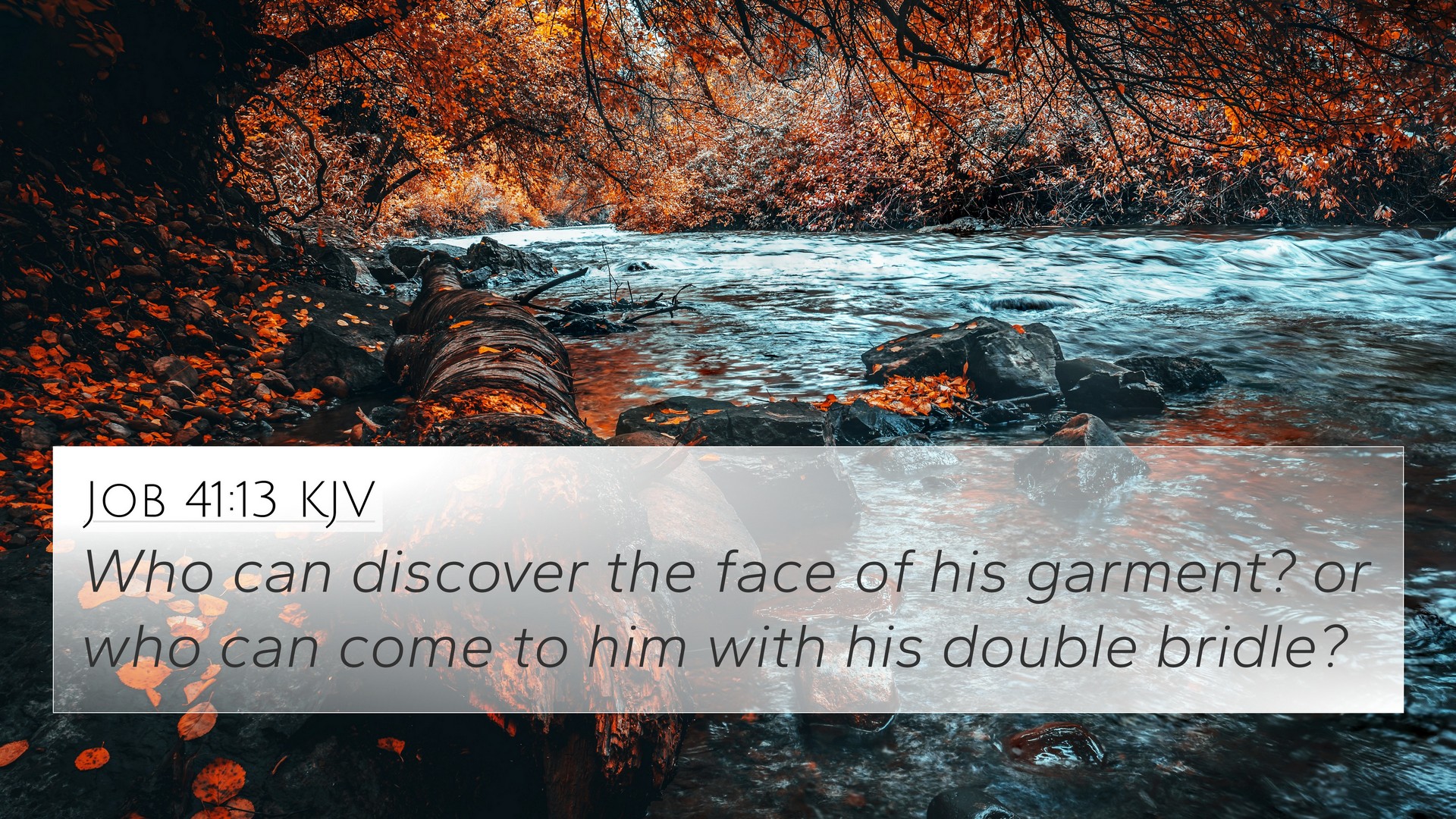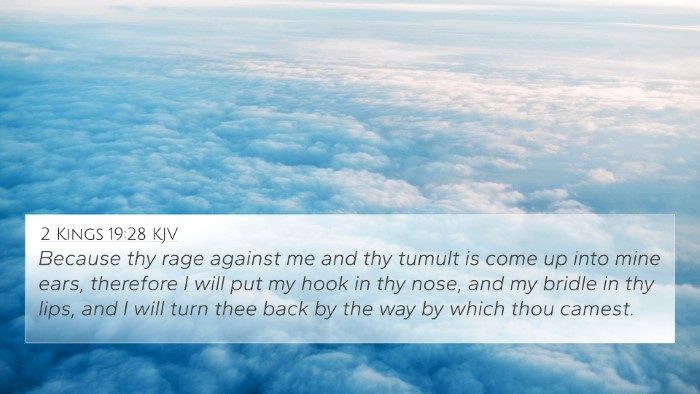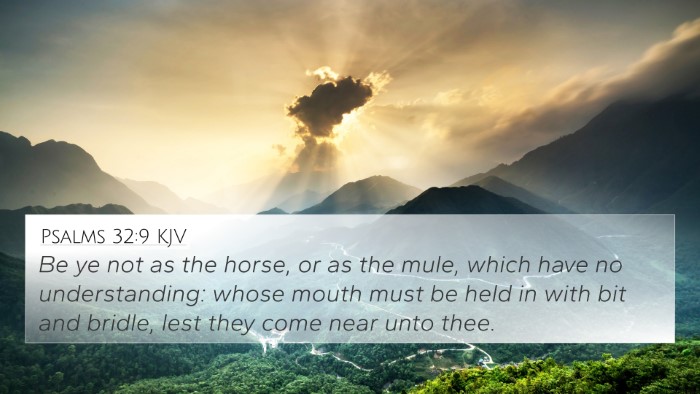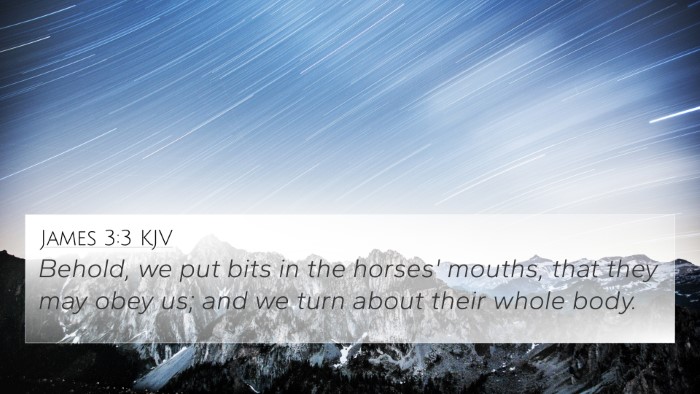Understanding Job 41:13
Job 41:13 states, "Who can discover the face of his garment? or who can come to him with his double bridle?" This verse references a formidable creature, often interpreted as the leviathan, illustrating the power and majestic nature of God’s creation.
Summary of Insights from Public Domain Commentaries
Various Bible scholars provide rich interpretations of this verse that deepens our understanding:
-
Matthew Henry:
Henry emphasizes the untamable nature of this creature, suggesting that it symbolizes the larger theme of God’s unmatched power and sovereignty over nature. He underscores that just as no one can control this creature, one cannot fully grasp God’s wisdom and omnipotence.
-
Albert Barnes:
Barnes remarks on the metaphorical significance of the leviathan, arguing that it draws attention to the futility of human attempts to challenge God’s authority. The 'double bridle' implies restraints that humans cannot apply, highlighting the creature's freedom and strength, akin to God's unfathomable ways.
-
Adam Clarke:
Clarke connects the description of the leviathan with the idea of chaos and destruction, presenting the creature as a representation of God’s judgment. He denotes that the verse calls into question humanity's relationship with divine power, which is beyond human understanding or reach.
Thematic Connections and Cross-References
Job 41:13 presents various connections to other Bible verses, enriching our understanding of the text:
-
Job 38:1-11:
God speaks about creation and limits, underlining the theme of divine authority over nature.
-
Psalm 104:25-26:
Mentions sea creatures, paralleling the majesty of God’s creations and the notion of mystery surrounding them.
-
Isaiah 27:1:
References a great dragon, another depiction of chaos and divine power, reinforcing the themes present in Job.
-
Revelation 13:1:
Describes a beast from the sea, drawing parallels between chaotic forces and the tension of divine sovereignty.
-
Psalm 74:14:
Merges themes of God battling leviathan-like creatures and highlights divine triumph over chaos.
-
Proverbs 30:29-30:
Describes creatures of great strength, parallel to the leviathan, emphasizing the unique abilities and roles within creation.
-
Jeremiah 51:34:
Referencing Babylon as a likened creature, which again embodies the tension between powerful entities and divine judgment.
-
Luke 8:24:
Jesus calms the storm, demonstrating human concern with nature’s ferocity and paralleling divine control over chaos.
-
Matthew 8:27:
Highlights the disciples’ awe of Jesus's authority, likening it to God's unmatched command over creation.
-
Hebrews 2:8:
Examines humanity's position over all creation, framing the tension between divine power and human limitations.
Tools for Better Understanding
To deepen the analysis of Job 41:13, the following tools can aid in exploring the connections between Bible verses:
- Bible Concordance: Helps in locating references of similar themes across the Bible.
- Bible Cross-Reference Guide: Provides insights into the relationships and parallels between scriptures.
- Cross-Reference Bible Study: Facilitates deeper understanding of thematic connections throughout the Bible.
- Bible Reference Resources: Includes tools for in-depth study and contextual exploration of scripture.
- Comprehensive Bible Cross-Reference Materials: Offers a wealth of connections for serious study.
Understanding Job 41:13 within the framework of cross-referencing biblical texts reveals profound insights into the nature of God, creation, and the philosophical discourse on sovereignty and authority. These verses remind readers of the limitations of human understanding when faced with divine majesty, leading to contemplation on the relationship between humanity and its Creator.





